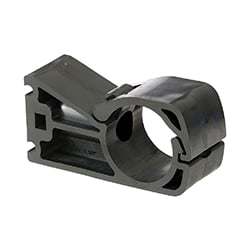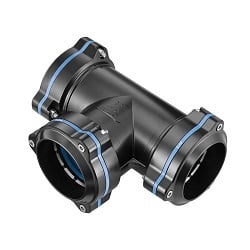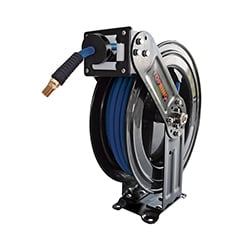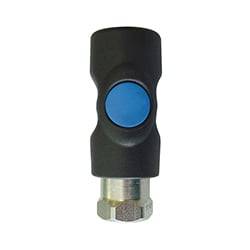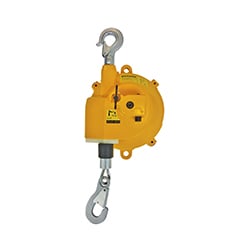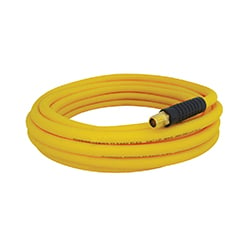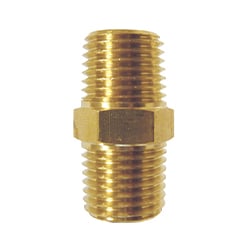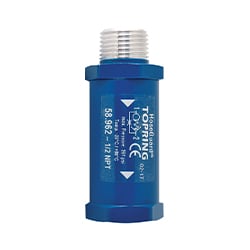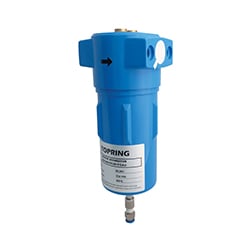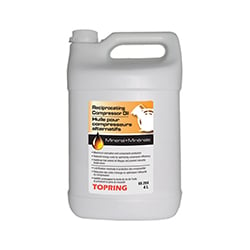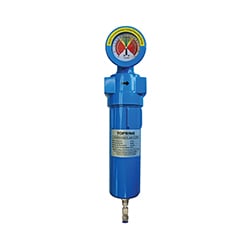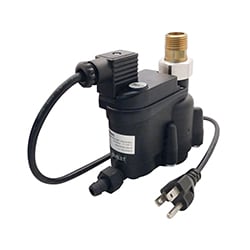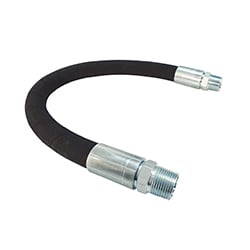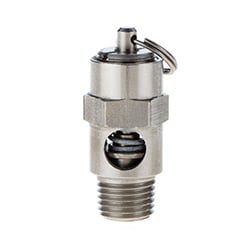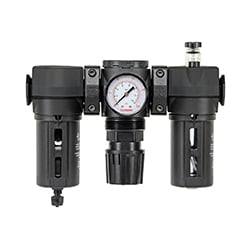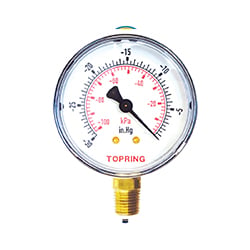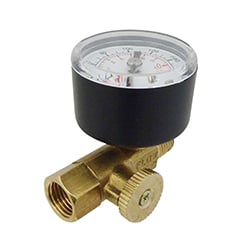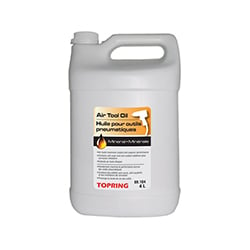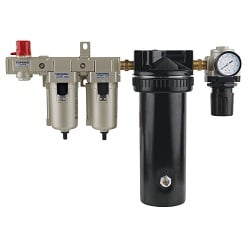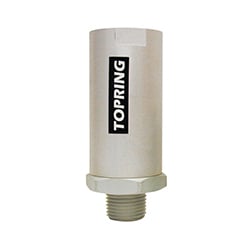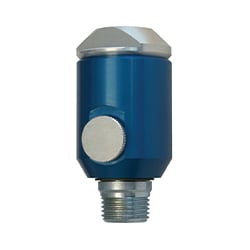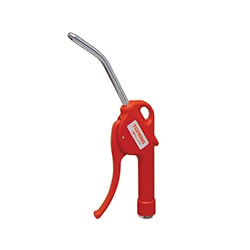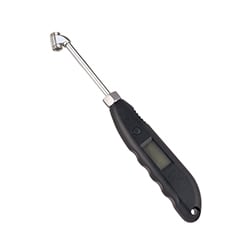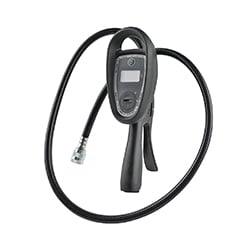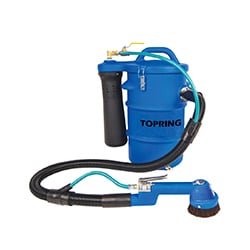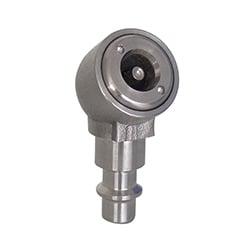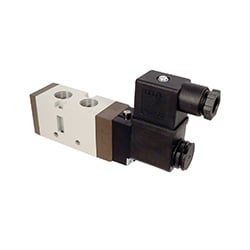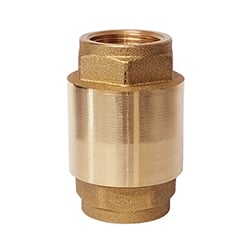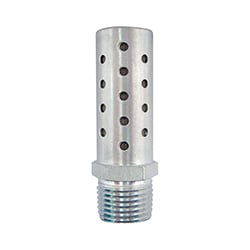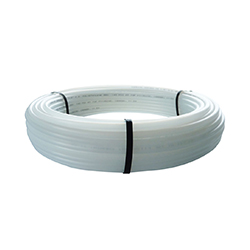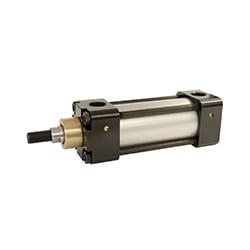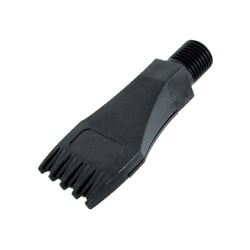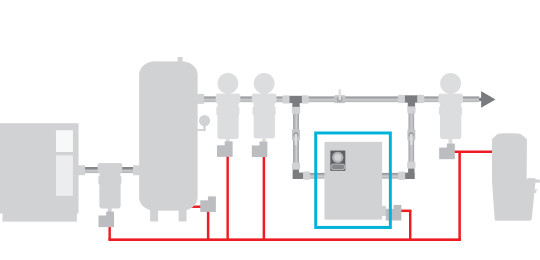You can remove as much moisture as possible from the air by installing a compressed air dryer between the air filters. Even with air filters, some water vapor still gets through and ends up in your system. The best way to remove these vapors is to lower the air temperature at the compressor outlet, which generates condensation and turns the vapors into water droplets. Once converted to water, the vapors are much easier to purge. The air dryer quickly eliminates condensates. As a result, the compressed air is practically dry. This makes a dryer the best solution for keeping water out of your compressed air system. Now the question is: which compressed air dryer should you choose and why?
Consider the following two examples:
a) You’re in a car, and there’s only 15% humidity in the air, so no one or nothing is wet. However, if you turn down the heat inside the car, the air will condense, and droplets will appear in the car windows.
b) On a very hot and humid summer day, the air looks like it usually does and there’s no fog. Even so, the air is laden with humidity, and condensation quickly forms on any cold object, like a glass of ice water. That’s how a refrigerant air dryer works: it cools the compressed air, which forces the water to condense, thereby removing the moisture from the air.
True or false: You have to choose an air dryer model based on the reciprocating compressor’s power.
False. When selecting your compressed air dryer model, start by determining where the air dryer will be installed.
- If the air dryer is located after the air tank, choose your dryer based on the total air demand of your tools and/or pneumatic equipment (SCFM).
- If the air dryer is located before the air tank, choose your dryer based on the compressor’s power (SCFM).
Where should you install the air dryer?
Most dryers are installed after the tank. This lets the tank pretreat the air by cooling it and separating the water droplets. A dryer is sometimes installed before the tank, for example, in applications that involve sudden high demand for air. This way, the tank protects the dryer from an overload (excessive air stream) that would send the condensed water directly to the dryer outlet.
There are two types of compressed air dryer
For the best results, install one or more prefilters upstream of the air dryer.
Standard refrigerant air dryers
As its name suggests, the standard refrigerant air dryer is a basic model. For optimum performance, this type of air dryer can accommodate a maximum temperature of 40°C at the inlet. Its dew point is from 1°C to 4°C.
Some compressors have neither an air cooler nor a tank. This means they can deliver air at a temperature in excess of 100°C. The dryer is often installed in the same room as the compressor and, in this case, the short pipe that connects the compressor to the dryer is not long enough to cool the air before it enters the dryer. You may need to install an air cooler between the compressor and the dryer or to relocate the dryer.
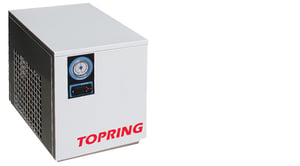
High-temperature refrigerant air dryers
The biggest difference between a high-temperature air dryer and a standard air dryer is that it will perform optimally at temperatures of up to 70°C. Its dew point is 10°C.

Is a regenerative dryer the same thing as a refrigerant air dryer?
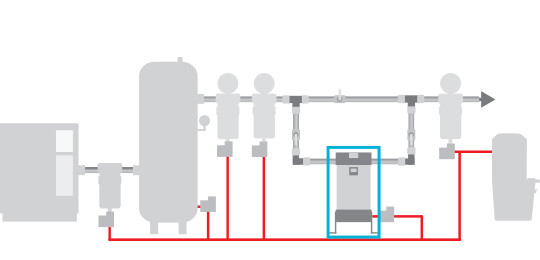
A regenerative dryer is installed in the compressor room.
A regenerative air dryer does the same thing as a refrigerant air dryer. Install it in the compressor room, between the air filters. You’ll need to install a filter at the inlet of a regenerative dryer.
A regenerative air dryer uses a desiccant medium to remove moisture from the stream of compressed air. Moist air passes through the desiccant, which adsorbs the moisture. The desiccant medium has a maximum capacity to adsorb moisture before it needs to be dried or regenerated. Unlike silica gel in other types of dryers and as this dryer’s name suggests, the desiccant medium in a regenerative dryer regenerates, leading to a much longer useful life (typically two years).
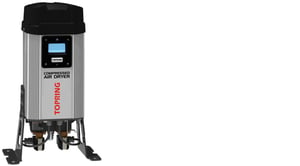
- It’s best to choose a regenerative air dryer if you operate in an industry where air must be extremely clean and dry or for an application that would require silica gel to be replaced too often, like in the food, pharmaceutical, or medical industries, a brewery, a beverage plant, and applications in cold environments (cold room, freezer, unheated room).
- Choose this type of dryer to comply with ISO 8573:1-2001, Class 2 Solid Particulate (1 micron), and Class 2 Water (-40°C pressure dew point). The regenerative dryer is 100% factory-tested to ensure the highest performance and to provide purity of compressed air.
- Choose this model for a maximum inlet temperature of 50°C and a factory
set -40°C dew point.


